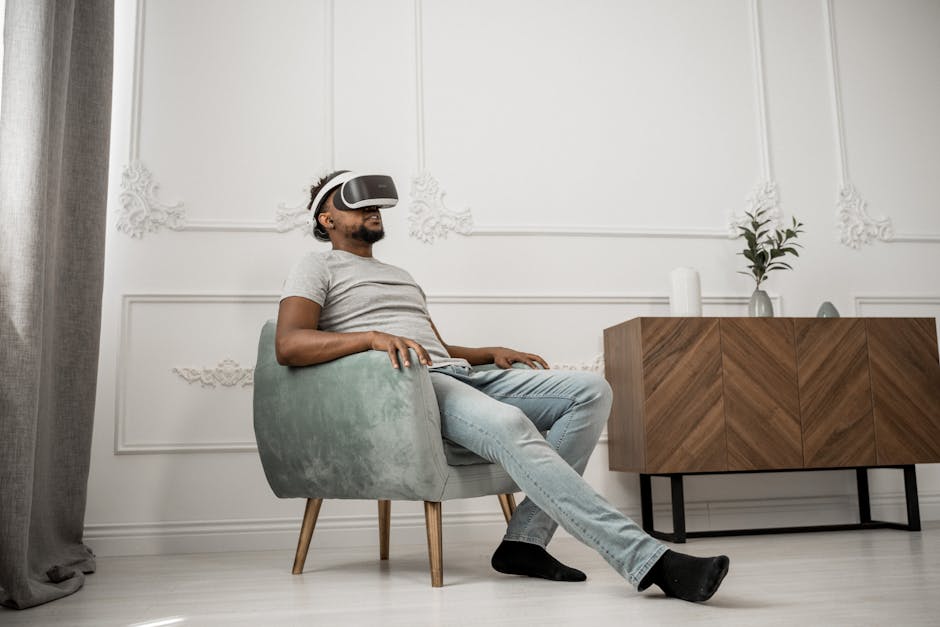Innovative Technologies Shaping the Future of Luxury Goods
Luxury goods have always been synonymous with exclusivity, craftsmanship, and timeless appeal. But as our society becomes increasingly digital, the luxury sector is no longer just about hand-stitched leather bags or diamond-encrusted watches. Instead, cutting-edge technology is reshaping the way we define and experience luxury.

Personalization Through Artificial Intelligence
When you think of luxury, the first thing that often comes to mind is exclusivity, having something tailor-made just for you. With artificial intelligence (AI) taking center stage, brands are now able to offer personalization at an unprecedented scale. Imagine walking into a boutique where an AI-powered assistant knows your preferences based on past purchases or browsing habits. This isn’t science fiction; it’s happening now.
Take Gucci, for example. The brand has integrated AI to curate personalized product recommendations for its online shoppers, ensuring that each customer feels uniquely catered to. Similarly, companies like LVMH have begun investing heavily in AI technologies to refine their customer interactions, offering everything from bespoke virtual styling sessions to predictive analytics that help brands anticipate trends before they even hit the mainstream.
The beauty of AI lies in its ability to make luxury feel intimate again, even in a highly digitalized retail space. It’s not just about knowing your favorite color, it’s about understanding your lifestyle, aspirations, and tastes in a way that feels organic and unintrusive.
Virtual Reality (VR) and Augmented Reality (AR): The New Showrooms
Shopping for high-end goods has always been an experience, one filled with ornate storefronts and impeccable service. But what happens when you can bring that experience into your living room? Enter VR and AR technologies, which are revolutionizing the luxury retail landscape.
Consider Burberry’s use of AR features within their mobile app. Customers can virtually "try on" handbags by projecting them onto their surroundings using their smartphone camera. Meanwhile, brands like Dior have taken things a step further by creating immersive VR experiences that allow customers to attend runway shows or explore new collections from anywhere in the world.
This isn’t just a gimmick; it’s a transformative way of bridging physical and digital spaces. For instance, during the global pandemic when travel restrictions limited access to flagship stores, VR became a lifeline for luxury shoppers wanting to explore collections in exquisite detail. Imagine being able to inspect every stitch on a handbag or the sparkle of a diamond ring, all without leaving your couch.
Sustainability Meets Tech Innovation
In an age where consumers are increasingly conscious of their environmental impact, sustainability has become a cornerstone of modern luxury. What’s fascinating is how technology is enabling brands to merge ethics with opulence.
Blockchain technology, often associated with cryptocurrency, has found an unexpected application in the luxury sector: verifying product authenticity and sustainability claims. Take De Beers’ Tracr platform as an example. Using blockchain, the company tracks each diamond from mine to market, ensuring ethical sourcing and providing buyers with complete transparency.
Similarly, brands like Stella McCartney are leveraging innovative materials created through tech-driven methods (think lab-grown leathers or bioengineered silk) to craft high-end products without compromising on environmental ethics. For consumers who want both luxury and peace of mind about their purchases’ origins, these advancements are game-changing.
The Role of Wearable Technology
Luxury is no longer confined to what you wear, it’s also about how those items interact with your life. Enter wearable technology: where fashion meets functionality in unprecedented ways.
Brands like Louis Vuitton have stepped into this space with products such as the Tambour Horizon smartwatch, blending haute couture aesthetics with cutting-edge tech capabilities like fitness tracking and smartphone integration. Similarly, Montblanc has incorporated smart features into its iconic pens and watches, offering tools like handwriting digitization for those who value tradition but don’t want to sacrifice modern convenience.
The concept here is simple yet impactful: why settle for style alone when you can have utility too? These innovations blur the lines between tech gadgets and traditional luxury goods, creating items that are as useful as they are beautiful.
The Future of Luxury: NFTs and Digital Collectibles
If you’ve been paying attention to trends lately, you’ve probably heard about NFTs, non-fungible tokens that represent ownership of unique digital assets. While initially popularized in art circles, NFTs are now making waves in the luxury sector as well.
For instance, Dolce & Gabbana recently auctioned off a collection of NFT-based fashion pieces called "Collezione Genesi," which included both physical garments and their digital counterparts stored on the blockchain. Buyers not only received exclusive couture items but also gained access to virtual versions that could be worn by avatars in metaverse environments.
This blending of physical and digital ownership offers intriguing possibilities for collectors who want something truly one-of-a-kind. It also taps into the growing interest in virtual spaces where people showcase digital assets as status symbols, think virtual art galleries or social platforms with customizable avatars adorned in NFT designer gear.
While still in its infancy within the luxury space, NFTs signal a bold step toward integrating traditional craftsmanship with digital innovation.
Tying It All Together
As these examples demonstrate, technology isn’t merely enhancing luxury, it’s redefining it entirely. Whether through AI-driven personalization or blockchain-backed transparency, innovation is making opulence more accessible while preserving its essence of exclusivity and craftsmanship.
The beauty of this shift lies in its ability to cater not only to long-time connoisseurs but also to a younger generation eager for experiences that blend tradition with modernity. So next time you admire a beautifully crafted watch or slip on a pair of designer shoes, consider what invisible threads of technology might be woven into their story and how they’re shaping what it means to indulge in true luxury today.
